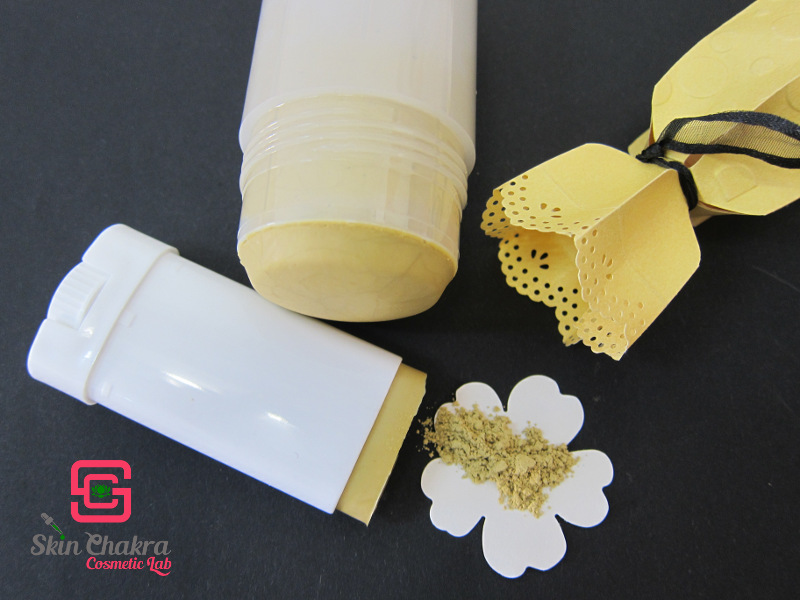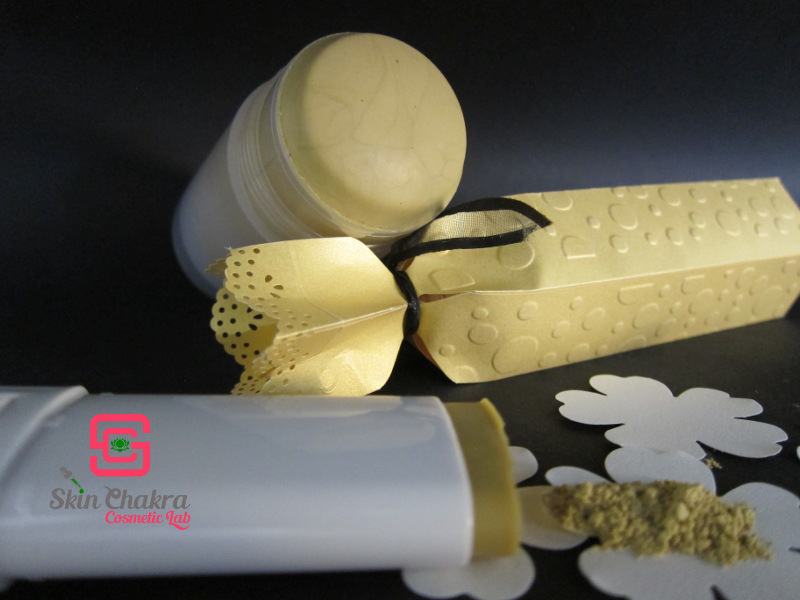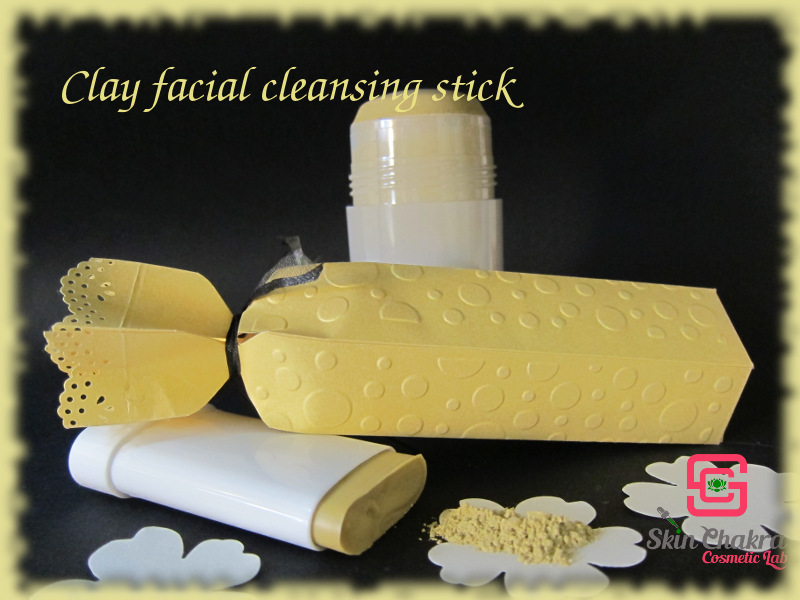Clay cleansers are among the most popular cleansers in the "natural" skin care community however, clay is one of the trickiest ingredients to peserve.
Clay procucts containing water are either under preserved (and there are thousands of them on the market) or contain a cocktain of preservatives that are non-wanted (and mostly non-allowed) in "natural" formulations.
Most "natural" formulators create cleansing balms that contain not water and are self-preserving. We have shared a few formulation of cleansing balms in the past. This is just one example:
As attractive and popular as these balms are, since they are packed in a wide mouth jar, there is always a risk of contamination when the consumer adds some water to the product during application.
A cleansing stick like this, reduces the risk of contamination because there is little chance that the consumer adds water to the product (some of you may think: what if the stick is applied on damp or wet skin? Well, there is a big difference between the stick coming into contact with damp skin and a balm in a jar having a few mls of water swimming on top of it).

Before I continue, I would like to refer you to our previous tutorials in which I have explained more about the concept of cleansing sticks:
Ingredients:
| Phase A |
|
| Distilled or deionized water |
to 100,0% |
| Glycerin |
5,0% |
| Plant based pentylene glycol |
5,0% |
| Sodium cocoyl isethionate |
25,0% |
| Phase B |
|
| Myrica fruit wax |
11,0% |
| Rice bran wax |
5,0% |
| Muru muru butter |
3,0% |
| Sunflower lecithin |
0,5% |
| Phase C |
|
| Camelina oil |
5,0% |
| Natural tocopherols |
0,5% |
| Rosemary CO2 extract |
0,1% |
| Curcuma longa CO2 extract |
0,1% |
| Antimicrobial plant extract |
0,1% |
| Yellow clay |
5,0% |
| Phase D |
|
| Coco glucoside |
4,0% |
| Sucrose cocoate |
2,0% |
| Proteol APL EF |
5,0% |
| Sodium PCA |
2,0% |
| Wintergreen oil |
0,1% |
| Cedarwood oil |
0,4% |
| Petitgrain oil |
0,5% |
| Phase D |
|
| Lactic acid 80% |
to adjust the ph |
Procedure:
1- Weight phase A in a heat proof beaker. Cover it and let it stand at room temperature for 1-2 hours. This will facilitate the next steps a lot.
2- Blend phase B in another heat proof beaker.
3- Blend phases C and D in separate beakers. You can use a magnetic stirrer for phase D. This is not necessary but can make your life a lot easier.
4- After 1-2 hours gently blend phase A, it should be a milky liquid
5- Heat phase A and B in a water bath at around 80-85 oC. Blend both phases separately till they are homogeneous.
6- Still in the water bath slowly add phase B to A and blend gently to avoid excessive foaming.
7- Slowly add phase C to the blend (turn the temperature down to 50 degrees). The clay does not dissolve in the oil phase, you only need to keep it dispersed.
8- Blend gently and now add phase D. Take a sample and dilute it to 10% for pH measurement. Per experience, we have added 0,7% lactic acid in phase D and the pH of our blend was 5,2 which is suitable for our purpose. You may need to use higher or lower concentrations of lactic acid depending on the raw material you are using.
This is quite an important and an annoying step. If you are too slow, your blend might start to solidify. Make a very small experimental batch (you don't even need to pour the blend into a stick) to figure out how much acid you'll need for pH adjustment.
9- Pour the blend in the empty stick you have kept at hand.
10- Put the stick in the fridge for at least 12 hours (till overnight) before using it or starting your stability tests or final packaging.

Enjoy the process and the skin feel of this stick.
BeHappy and have fun




